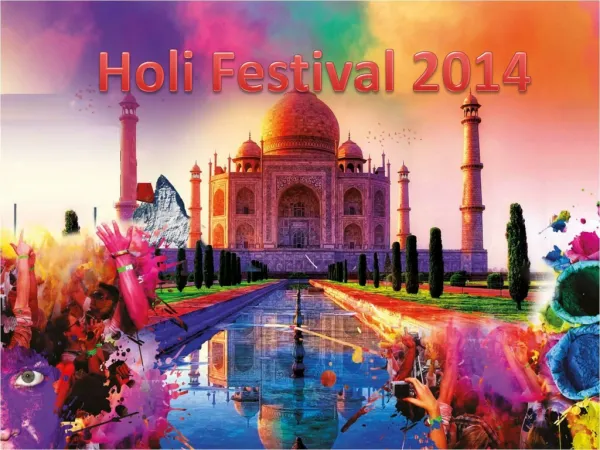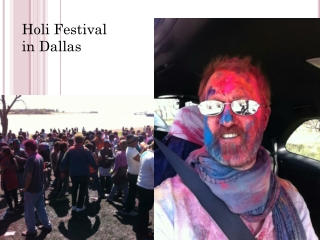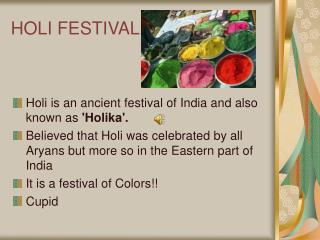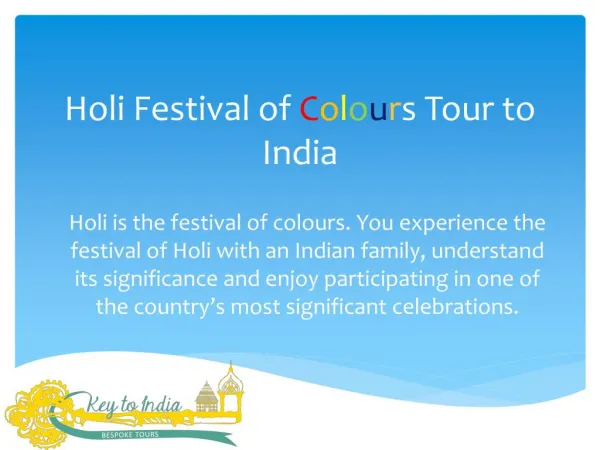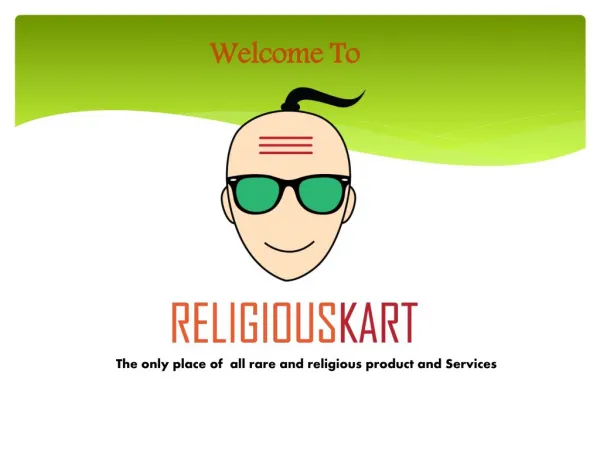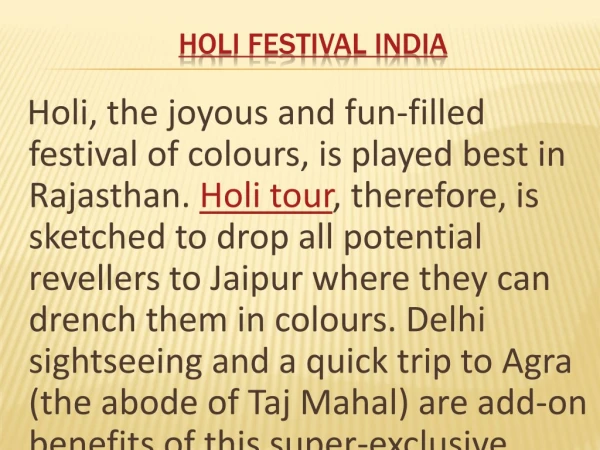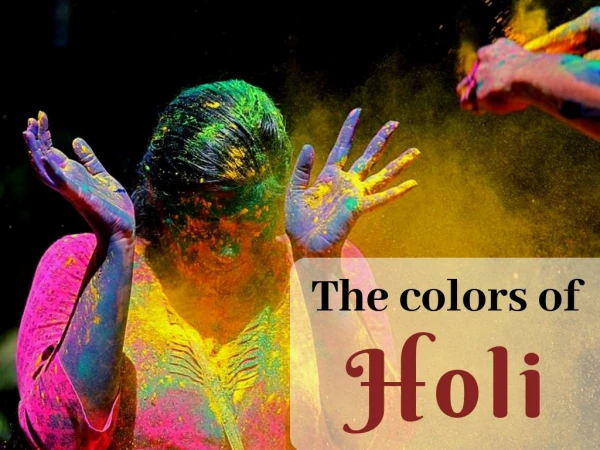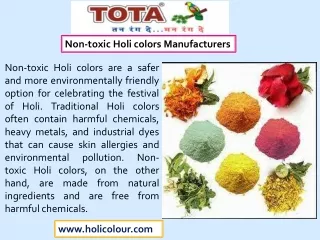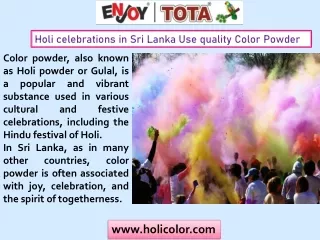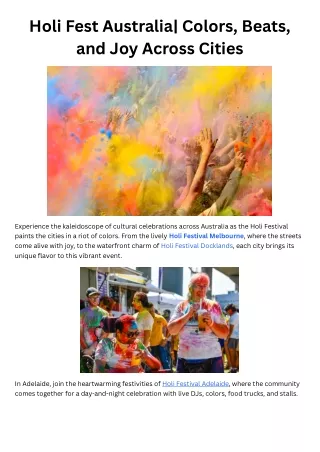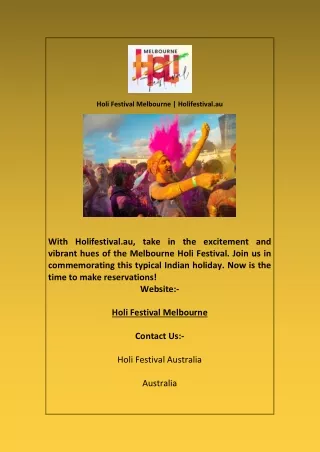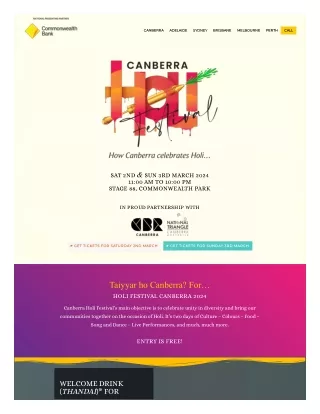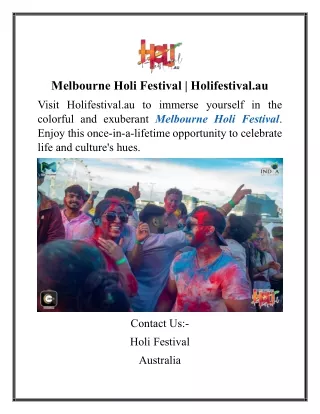Celebrate Holi Festival Event in Melbourne 29th, 30th and 31 March 2024
0 likes | 23 Views
Join the vibrant celebration of Holi Festival in Melbourne at Ron Barassi Senior Park West on March 29th,30th and 31st 2024.Secure your tickets now!<br>https://holifestival.au/holi-festival-melbourne/
Download Presentation 

Celebrate Holi Festival Event in Melbourne 29th, 30th and 31 March 2024
An Image/Link below is provided (as is) to download presentation
Download Policy: Content on the Website is provided to you AS IS for your information and personal use and may not be sold / licensed / shared on other websites without getting consent from its author.
Content is provided to you AS IS for your information and personal use only.
Download presentation by click this link.
While downloading, if for some reason you are not able to download a presentation, the publisher may have deleted the file from their server.
During download, if you can't get a presentation, the file might be deleted by the publisher.
E N D
Presentation Transcript
More Related


